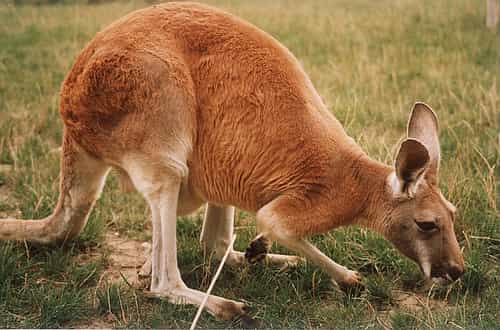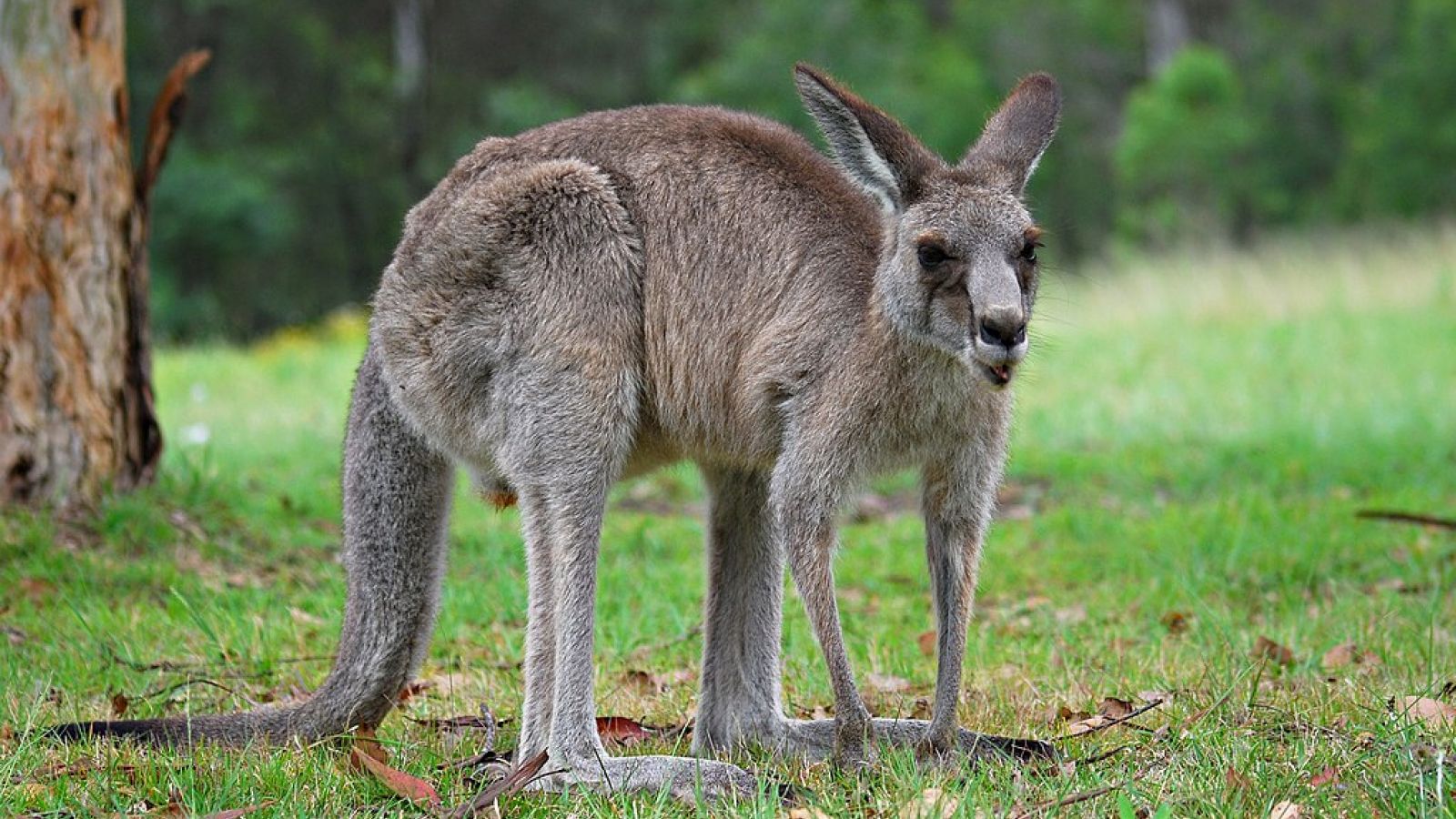Text to go here...
 1. Kangaroos can use their tails as a tail as a 'fifth leg'
1. Kangaroos can use their tails as a tail as a 'fifth leg'
Hopping is the primary mode of locomotion for kangaroos, especially when moving quickly. However, when their moving at a slower pace, they can use their tails as a "fifth leg" to push them off the ground as they move.
https://www.livescience.com/27400-kangaroos.html
2. Joeys are born after 31-36 days
Baby kangaroos are born just after 31-36 days of gestation dependent on the species. When they are born, they are usually the size of a grain of rice or a jelly baby. Being relatively underdeveloped babies, they live and develop in the mother's pouch for another 8 months, depending on the species.
https://kangaroocreekfarm.com/about-roos/
3. Kangaroos can pause their pregnancy
A female kangaroos second pregnancy does not follow the same course as the first. The second baby stops developing when its around 100 cells. In this time, it waits for the first-born gestating in the pouch to leave. This is called embryonic diapause.
https://kangaroocreekfarm.com/about-roos/
4. You can also find kangaroos in New Guinea
A new species of kangaroo, the golden-mantled tree kangaroo was discovered in the Torricelli Mountains of Papua New Guinea. Due to their habitation of lowland and mountainous forests, they look quite different from their Australian relatives. Their appearance has been described to be a cross between a kangaroo and a lemur.
https://www.worldwildlife.org/media?species_id=tree-kangaroo
5. The kangaroo genome has been sequenced
Researchers have sequenced the genome of these Australian marsupials, allowing the identification of regions of similarity and difference that can provide clues about the structure and function of genes vital to human health and development.
https://www.sciencedaily.com/releases/2008/11/081118092253.htm
6.Kangaroo meat has tons of conjugated linoleic acid
Kangaroo meat is the best source of CLA (conjugated linoleic acid) - a healthy fat which possesses potential anti-carcinogenic and anti-diabetic properties, in addition to reducing obesity and high blood pressure. Studies are now underway to determine what is responsible for CLA formation and why kangaroo meat contains so much. If successful, it may be possible to increase the CLA content of other meats and products to increase potential health benefits to consumers.
https://www.cabi.org/animalscience/news/13260
7. Kangaroos belong to the Macropodidae family
The Macropodidae family includes the Red Kangaroo, Western Grey Kangaroo, Antiliopine Kangaroo, the Black Wallaroo and the Eastern Grey Kangaroo among others. Macropodidae means 'big foot' in Latin. There are 65 species within this family.
https://www.bushheritage.org.au/species/kangaroos
A mob is a group of kagaroos and size can range from 5 to 40 individuals. Although a mob is a group of kangaroos, individuals within the mob are free to move around and function individually. In a mob the oldest male dominates the group in the mating season.
https://www.britannica.com/animal/kangaroo/Behaviour
9. Kangaroos have similar adaptations to camels
They are well adapted to arid conditions, similar to that of a camel. This includes being able to regulate their blood chemistry in drought and becoming infertile in seasons when their body has little water. Therefore, rainfall greatly affects kangaroo populations.
https://www.animalfactsencyclopedia.com/Kangaroo-facts.html
10. Their hind legs don't move independently on land but do in water
When in water, kangaroos display a reflex that helps them swim adeptly. Underwater observation has shown that when kangaroos are submerged, they did not inhale water, kept their heads and necks above the water surface and swim, moving their hind legs separately, which they are unable to do on land.
https://www.researchgate.net/publication/263543841_How_kangaroos_swim

